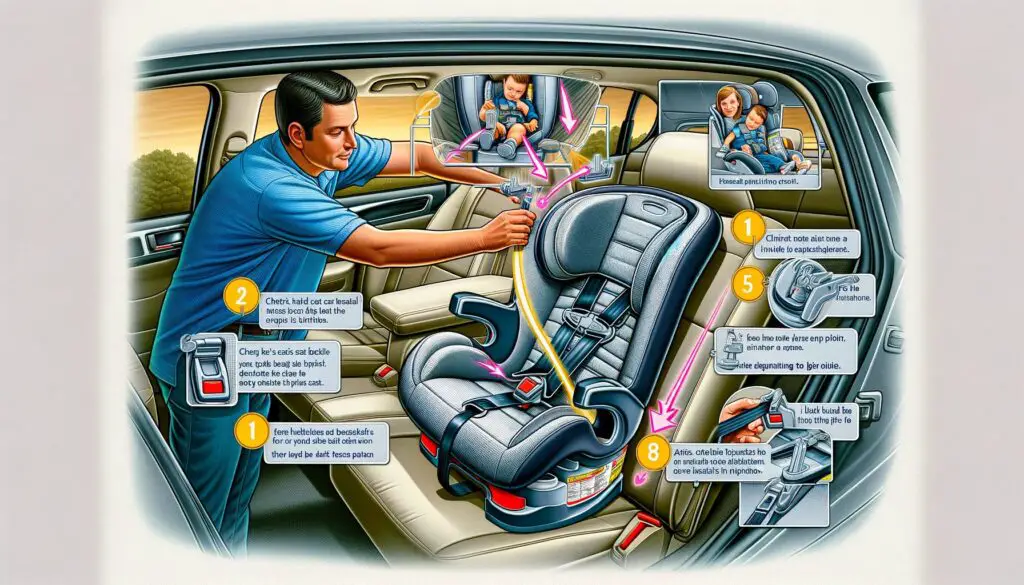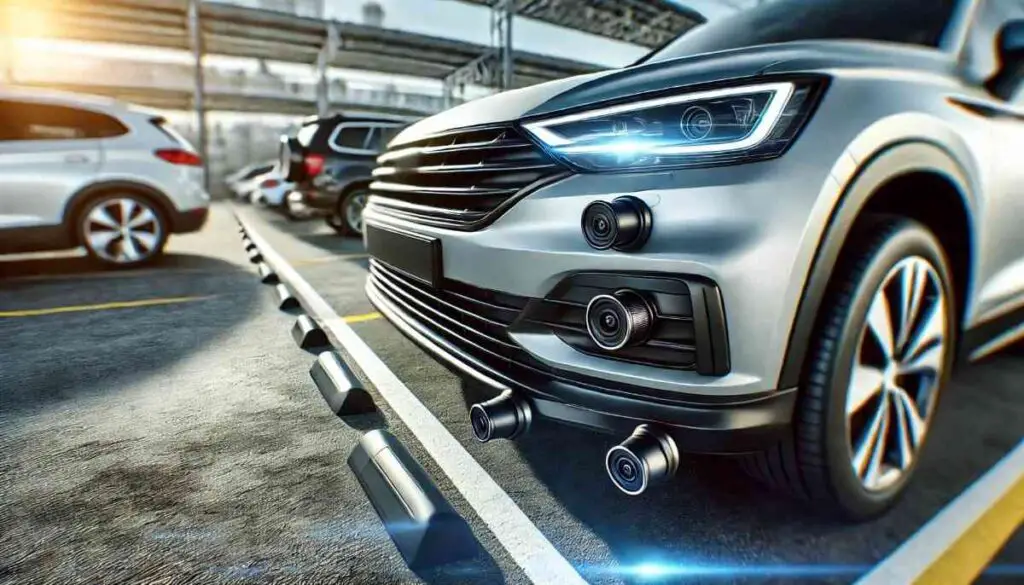I. Introduction
Car accidents are an unfortunate reality of our roads, and they can happen to anyone at any time. When it comes to protecting our loved ones, especially our children, ensuring their safety while driving is paramount. One crucial aspect of this safety is the proper installation of car seats. In this comprehensive guide, we will walk you through each step of the process to ensure your child’s car seat is installed correctly. We’ll also discuss why this matters and what can go wrong if it’s not done right.
II. Read the Manuals
Car Seat Owner’s Manual
Before diving into installation, start by thoroughly reading the car seat owner’s manual. This essential document provides specific instructions for your particular car seat model. It covers important details like weight and height limits, proper harnessing techniques, and even cleaning instructions. Ignoring this manual could lead to misuse, which compromises safety.
Vehicle Owner’s Manual
Equally important is your vehicle owner’s manual. This guide contains crucial information about your car’s seating and restraint systems. Pay special attention to sections related to car seat installation, including recommended locations and the use of the LATCH system. Using this manual in conjunction with your car seat manual ensures a proper fit.
III. Choosing the Right Location
The placement of your child’s car seat within your vehicle is a critical safety factor. Here’s what you need to know:
Safest Position: Center of the Back Seat
Whenever possible, install the car seat in the center of the back seat. This location minimizes the risk of injury in the event of a side-impact collision. It provides the most protection, surrounded by the car’s structure.
Alternatives: Behind the Passenger Seat
If the center position isn’t feasible due to multiple car seats or other reasons, install the car seat behind the passenger seat. This ensures that the driver’s view remains unobstructed, and it’s easier to check on your child.
Avoiding Front Seat Installation
It’s crucial to avoid installing a rear-facing car seat in the front seat of a vehicle equipped with airbags. In a crash, the force of an airbag deployment can be fatal to an infant or young child.
IV. Securing the Car Seat
Properly securing the car seat is the cornerstone of safety. We’ll explore two common methods:
Seat Belt Installation
Correct Routing
Ensure that the seat belt is routed through the appropriate path as indicated in both the car seat and vehicle manuals. This step ensures that the car seat remains stable and secure.
Tight Buckling
After routing the seat belt, make sure it’s pulled tight to remove any excess slack. A properly tightened seat belt keeps the car seat from shifting during a collision.
LATCH System
The Lower Anchors and Tethers for Children (LATCH) system is another option for installation, available in most vehicles manufactured after September 1, 2002. Follow these steps for a secure fit:
Proper Attachment to LATCH Anchors
Attach the LATCH connectors to the designated anchors in your vehicle. Consult both the car seat and vehicle manuals for the exact locations of these anchors. Ensure a snug fit, free of any twists in the straps.
V. Checking Stability
To guarantee your child’s safety, confirm that the car seat is stable within the vehicle:
The One-Inch Rule
After installation, test for stability. Push and pull the car seat firmly from side to side and front to back. If it moves more than one inch in any direction, it’s not secure enough.
Using the Shake Test to Ensure Stability
Give the car seat a firm shake. If it wobbles excessively, it needs to be tightened or reinstalled. A stable car seat is crucial for your child’s protection.
VI. Harness and Strap Safety
Properly securing your child within the car seat is essential for their safety and comfort:
Ensuring Snugness Without Discomfort
The harness straps should be snug but not too tight. You should be able to fit only one finger between the straps and your child’s collarbone.
Preventing Slippage
Ensure that the harness straps lie flat and free from twists. Straps should not slide off the child’s shoulders. Proper harnessing is vital for preventing ejection in a collision.
VII. Additional Tips
Here are some additional considerations to enhance car seat safety:
Checking Car Seat Level
Use a bubble level indicator to verify that the car seat is at the correct angle. Refer to your car seat manual for the specific angle required.
Correct Recline Angle
For rear-facing seats, the correct recline angle is crucial. It ensures your child’s head doesn’t fall forward, potentially blocking their airway.
Importance of Top Tether
Many forward-facing car seats come with a top tether strap. Use it whenever possible to minimize forward movement in a crash.
Checking for Recalls on NHTSA Website
Regularly check the National Highway Traffic Safety Administration (NHTSA) website for car seat recalls and safety notices. It’s essential to stay informed about any potential issues with your car seat model.
VIII. Seeking Professional Help
Sometimes, despite your best efforts, you may feel unsure about your car seat installation. In such cases, consider consulting a Certified Child Passenger Safety Technician:
Introduction to Certified Child Passenger Safety Technicians
These experts are trained to assist with car seat installations and ensure they meet safety standards.
When to Consult a Technician
Seek professional help if you’re uncertain about any aspect of car seat installation or if you’re using a car seat for the first time. Your child’s safety is worth the extra effort.
IX. Quick Checklist for Car Seat Installation
To summarize the key points for a safe car seat installation, here’s a handy checklist:
- Read both the car seat and vehicle owner’s manuals.
- Choose the safest location within your vehicle.
- Secure the car seat using either the seat belt or LATCH system.
- Confirm stability with the one-inch rule and the shake test.
- Ensure proper harnessing for your child’s comfort and safety.
- Check the car seat’s level and recline angle.
- Use the top tether for forward-facing seats when available.
- Stay updated on recalls through the NHTSA website.
- Seek professional help when in doubt.
X. Conclusion
In conclusion, proper car seat installation is non-negotiable when it comes to your child’s safety on the road. Every step, from reading the manuals to securing the harnesses, plays a vital role in protecting your little one during car journeys. By following this comprehensive guide and checklist, you can have peace of mind, knowing that you’ve taken all necessary precautions to ensure your child’s safety in the car.
XI. Frequently Asked Questions
FAQ 1: How do I know if my car seat is suitable for my child’s age and weight?
Refer to both the car seat and vehicle owner’s manuals for specific guidelines on weight and height limits. These limits ensure your child’s safety in the seat.
FAQ 2: Can I reuse a car seat from a previous child?
It’s generally safe to reuse a car seat unless it has been in a moderate to severe accident, is expired, or has recalls that cannot be addressed.
FAQ 3: Are there any special considerations for installing car seats in older vehicles?
Older vehicles may not have the LATCH system, but you can still secure the car seat using the seat belt. Ensure it’s done correctly, and consult your vehicle’s manual for guidance.
FAQ 4: What are the most common mistakes people make when installing car seats?
Common mistakes include not reading manuals, improper harnessing, loose installation, and ignoring recalls. This guide addresses these issues to ensure a safe installation.
FAQ 5: Do I need to replace my car seat after an accident, even if it looks undamaged?
Yes, you should replace a car seat after any accident, no matter how minor, as it may have hidden structural damage that compromises safety.
FAQ 6: How can I clean my car seat without compromising safety?
Follow the cleaning instructions provided in your car seat manual. Usually, mild soap and water are recommended. Avoid harsh chemicals and machine washing unless specified.
FAQ 7: What is the difference between infant car seats and convertible car seats?
Infant car seats are rear-facing and designed for infants. Convertible car seats can be used both rear-facing for infants and forward-facing for older children, providing more extended use.
FAQ 8: Can I install a car seat in the front seat if my vehicle doesn’t have a back seat?
Installing a rear-facing car seat in the front seat with an active airbag is dangerous. If your vehicle lacks a back seat, consult your car seat and vehicle manuals for alternative installation options.
FAQ 9: Are there any safety regulations regarding aftermarket car seat accessories?
Using aftermarket accessories not approved by the car seat manufacturer can compromise safety. Stick to manufacturer-recommended accessories, if any, and consult your car seat manual.
FAQ 10: How do I know if my car seat has been recalled, and what should I do if it has?
Regularly check the NHTSA website for car seat recalls. If your car seat is recalled, follow the manufacturer’s instructions for rectifying the issue or replacing the seat.
XII. Conclusion
In summary, proper car seat installation is paramount for your child’s safety on the road. By following the steps outlined in this guide and staying informed about best practices, you can ensure that your child travels securely and comfortably. Remember, taking the time to install your car seat correctly is an investment in your child’s safety, providing you with the peace of mind you deserve.
XIII. Additional Resources
For further information on car seat safety, consider these resources:
Recommended Reading:







